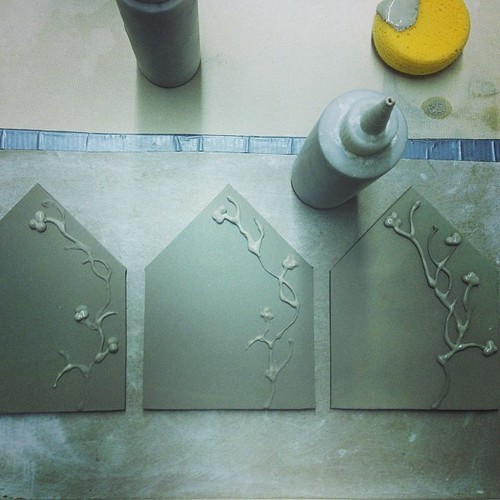Slip pottery, by definition, refers to ceramic ware that is decorated using a liquid mixture of clay and water, known as “slip,” which is used to coat or embellish the surface of pottery with unique colors and textures. This traditional technique has a rich heritage spanning various cultures and continues to be a cherished art form among both contemporary potters and collectors alike. The versatility of slip allows artisans to experiment with myriad styles, from intricate patterns to striking, bold designs, making it a dynamic medium for creative expression.

| Technique | Description | Examples of Cultures |
|---|---|---|
| Slip Trailing | Applying slip by squeezing it out of a tube to create raised patterns. | English, Islamic art |
| Slip Casting | Pouring slip into molds to create precise shapes and designs. | Chinese porcelain |
| Slip Inlay | Incising designs into clay and filling them with colored slip. | Korean Goryeo |
Exploring the Art of Slip Pottery

Imagine walking into a pottery studio where every surface is a canvas, and the tool of choice is the earthy, fluid mixture known as slip. This magical concoction of clay and water opens up a realm of endless possibilities for artists. Understand the basics of this art form with Slip Clay Definition: Everything You Need to Know. Slip pottery is not just about creating functional pieces; it’s an adventure in texture, color, and culture.
Slip-trailing stands out with its playful, embossed patterns, crafted by deftly squeezing slip from a tube onto the surface of pottery. The process invites an unrestrained dance of the hand, creating raised designs that have adorned everything from English earthenware to intricate Islamic ceramics. These designs can be as simple as whimsical spirals or as complex as intricate geometric shapes, capturing the imagination of anyone fortunate enough to encounter them.

In contrast, slip casting offers a refined form of precision and consistency. By pouring slip into pre-made molds, potters can produce impeccably accurate shapes, a technique detailed in this Slip-casting guide that helped Chinese artisans perfect the timeless beauty of porcelain. This method revolutionized pottery, making it possible to replicate detailed designs on a large scale, without losing the elegance and subtlety that are the hallmarks of fine ceramic art.

But perhaps the most intriguing is slip inlay, a technique that beautifully marries incision and color. With Korean Goryeo pottery as a prime example, artisans would incise or carve intricate designs into the clay before filling them with contrasting slip. This method creates a striking visual effect as the colored inlays sit flush with the surface of the piece, drawing the eye with their intricate detail and vivid colors.

The Cultural Significance of Slip Pottery
Slip pottery is more than just technique; it’s a profound expression of cultural identity and artistic heritage. Each culture that embraced slip pottery contributed its unique flair to the craft. For instance, English potters in the 17th and 18th centuries relished the versatility of slip to decorate domestic wares with characteristic folk art designs. These pieces were not only functional but also served as personal and artistic expressions of their makers.
Meanwhile, the Islamic cultures leveraged slip trailing to enhance calligraphic and geometric designs, reflecting their awe for intricate patterns and mathematical craftsmanship. This approach not only adorned everyday items but also highlighted the importance of artistry in daily life, transforming ordinary objects into extraordinary works of art.
In Asia, slip techniques significantly shaped the aesthetic journey of ceramics. Korean potters developed slip inlay during the Goryeo dynasty, a practice that imbued their pottery with a distinct elegance, where designs buried in porcelain emerged with quiet dignity. Explore more about High-Purity “Ohio Slip” Clay for an interesting perspective on regional variations.
Why Slip Pottery Continues to Captivate
The persistent allure of slip pottery lies in its adaptability and the rich narrative it carries. For modern potters, embracing slip means stepping into a tradition that is vibrant and engaging. Whether recreating historical motifs or crafting contemporary designs, artists find limitless opportunities to experiment with this versatile medium.
For collectors and enthusiasts, the journey through slip pottery is akin to a voyage through time and space, touching the essence of different cultures and their artistic legacies. Each piece tells a story, offering a glimpse into the era and environment in which it was created, making slip pottery an evergreen subject of fascination.
If you’re intrigued by the alluring world of slip pottery, dive into more recent articles to expand your knowledge. Ready to dive into the world of slip pottery yourself? Whether you’re an artist or art lover, share your thoughts or experiences in the comments. What designs do you dream of bringing to life, or which cultural techniques inspire you the most? Let’s continue the conversation and celebrate this enduring art form together!
Slip pottery is such a fascinating technique that truly brings each piece to life with its vibrant colors and unique textures. Whether you’re a seasoned ceramicist or just starting out, exploring slip decoration can add a whole new dimension to your pottery creations. It’s amazing how a simple mixture of clay and water can transform the surface of your work into something truly special.
Stay Connected
To keep up with the latest tips, inspiration, and projects, be sure to follow us on Instagram. We'd love to see your slip pottery creations and share in your artistic journey. Let's continue to inspire each other and grow our creative community together!
